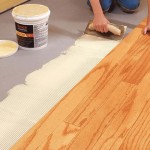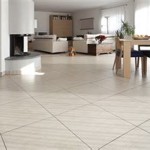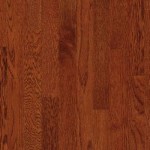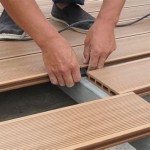Laminate Flooring in the Kitchen: A Practical and Stylish Choice
The kitchen, often considered the heart of the home, demands flooring that can withstand heavy foot traffic, spills, and the general wear and tear of daily life. While traditional options like tile and hardwood have long been popular, laminate flooring has emerged as a strong contender, offering a compelling blend of aesthetics, durability, and affordability. This article explores the advantages and disadvantages of using laminate flooring in the kitchen, providing a comprehensive overview to help homeowners make informed decisions.
Laminate flooring is a multi-layered synthetic product designed to mimic the appearance of natural materials such as wood, stone, or tile. It comprises four primary layers: a wear layer, a decorative layer, a core board, and a backing layer. The wear layer, typically made of aluminum oxide, provides resistance to scratches, stains, and fading. The decorative layer is a high-resolution photographic image that gives the flooring its realistic appearance. The core board, usually made of high-density fiberboard (HDF) or medium-density fiberboard (MDF), provides structural stability and impact resistance. The backing layer provides moisture resistance and helps to balance the board.
Durability and Water Resistance
One of the primary considerations when selecting kitchen flooring is its ability to withstand the demands of a busy environment. Laminate flooring offers several advantages in this regard. The wear layer provides excellent protection against scratches and scuffs, making it suitable for households with children and pets. While not entirely waterproof, laminate flooring is generally water-resistant, meaning it can withstand spills and splashes if cleaned up promptly. However, it is crucial to select a laminate product specifically designed for wet areas, as standard laminate may be susceptible to water damage if exposed for extended periods. Products labeled as "waterproof" or "water-resistant" will offer superior protection. The seams between laminate planks are the most vulnerable areas for water penetration, so proper installation and the use of sealing agents are essential.
The thickness of the laminate flooring also plays a crucial role in its durability. Thicker planks generally offer greater impact resistance and are less likely to buckle or warp under heavy use. Consider opting for a laminate with a thickness of at least 10mm for optimal performance in the kitchen.
It is important to note that while laminate is durable, it is not indestructible. Sharp objects can still scratch the surface, and prolonged exposure to standing water can lead to swelling and damage. Regular maintenance, including sweeping, vacuuming, and damp mopping, is essential for maintaining the integrity and appearance of laminate flooring in the kitchen.
Aesthetics and Style Versatility
Laminate flooring provides a wide range of aesthetic options, allowing homeowners to achieve the desired look and feel in their kitchens without the high cost of natural materials. The decorative layer can replicate the appearance of various wood species, including oak, maple, hickory, and walnut, as well as stone, tile, and even concrete. This versatility makes it easy to coordinate laminate flooring with existing cabinetry, countertops, and appliances.
Laminate flooring is available in various textures and finishes, further enhancing its realism. Embossed textures mimic the grain patterns of wood, while smooth finishes offer a sleek and modern look. Beveled edges create a more authentic plank appearance, and wider planks can create a sense of spaciousness. The selection of color and pattern can significantly impact the overall ambiance of the kitchen. Lighter colors can brighten a small kitchen, while darker colors can add warmth and sophistication.
The ease of installation is another advantage of laminate flooring. Most laminate products feature a click-lock system, allowing for a floating installation, which means the flooring is not glued or nailed to the subfloor. This simplifies the installation process and makes it a viable DIY project for many homeowners. However, proper subfloor preparation is crucial for a successful installation. The subfloor must be level, clean, and dry to prevent unevenness and potential damage to the laminate flooring.
Furthermore, laminate flooring does not readily fade. The wear layer is designed to resist fading as a result of direct sunlight or excessive light exposure. As a result, laminate flooring is a good option for kitchens that receive a lot of natural light.
Cost-Effectiveness and Maintenance
Compared to hardwood, tile, and natural stone, laminate flooring is significantly more affordable. This cost-effectiveness makes it an attractive option for homeowners on a budget who want to achieve a high-end look without breaking the bank. The price of laminate flooring can vary depending on the quality, thickness, and design, but it generally remains a more economical choice than other flooring materials.
In addition to the lower initial cost, laminate flooring also offers long-term cost savings due to its low maintenance requirements. Unlike hardwood, laminate does not require regular refinishing or sealing. Routine cleaning with a damp mop and a mild detergent is typically sufficient to keep laminate flooring looking its best. Avoid using abrasive cleaners or excessive water, as these can damage the surface. It's also recommended to use felt pads under furniture legs to prevent scratches and scuffs.
While laminate flooring is relatively easy to maintain, it is important to address spills and stains promptly to prevent permanent damage. Use a soft cloth or paper towel to absorb spills immediately and clean the affected area with a damp mop. For stubborn stains, use a laminate-specific cleaner according to the manufacturer's instructions. Avoid using harsh chemicals, bleach, or ammonia-based cleaners, as these can damage the wear layer.
The lifespan of laminate flooring can vary depending on the quality of the product, the level of foot traffic, and the maintenance practices. With proper care, laminate flooring can last for 10-20 years or even longer. However, it is important to note that laminate flooring cannot be refinished like hardwood, so scratches and damage are generally repaired through plank replacement. For this reason, it is prudent to purchase extra planks during the initial installation to have on hand for future repairs.
When choosing laminate flooring for the kitchen, it is crucial to select a product that is specifically designed for high-moisture environments. Look for laminate with a water-resistant core and a tight locking system to prevent water penetration. Proper installation is also essential for ensuring the longevity and performance of the flooring. Consider hiring a professional installer to ensure that the subfloor is properly prepared and that the planks are correctly installed.
While laminate flooring offers numerous advantages, it also has some limitations. It is not as durable as hardwood or tile and is more susceptible to scratches and dents. It also lacks the natural warmth and character of wood or stone. However, for many homeowners, the combination of affordability, aesthetics, and ease of maintenance makes laminate flooring a compelling choice for the kitchen.

Kitchen Laminate Flooring 2024 Guide Floorvenue

Laminate Flooring In The Kitchen

Is There A Special Way To Install Laminate Flooring In The Kitchen

Pros Cons Of 5 Popular Kitchen Flooring Materials

Options For The Best Kitchen Flooring Lx Hausys

Laminte Kitchen Floor Ideas

6 Ideas For Waterproof Kitchen Flooring Lx Hausys

5 Best Laminate Flooring For Your Kitchen

All You Need To Know About Laminate Kitchen Floors Wren Kitchens

Kitchen Laminate Flooring Home Pros
Related Posts








